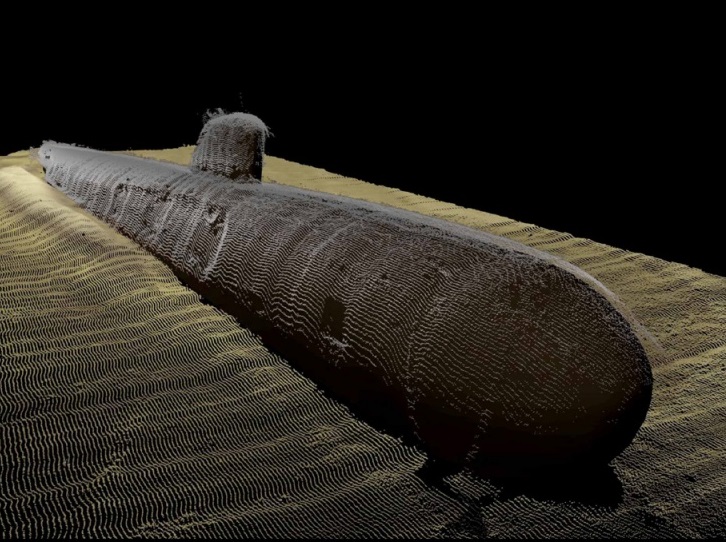
Monthly Highlights from the Russian Arctic, October 2025
In this news digest, we monitor events that impact the environment in the Russian Arctic
News

Publish date: 16/08/2024
News
Russian forces have occupied the plant, which is Europe’s largest such facility, for more than two years, but both the Russian and Ukrainian sides have reported no elevations of radiation level in the aftermath of the incident.
On Monday, the International Atomic Energy Agency said in a statement that its representatives at the plant had inspected the damaged cooling tower from which black smoke billowed over the weekend but could not immediately determine the cause of a fire.
Initial reports from Russian-installed plant officials alleged that a Ukrainian-launched drone may have been responsible for the fire. But the IAEA said in its statement that it had recovered no evidence of an attack.
Russia, Ukraine and the International Atomic Energy Agency (IAEA) said there had been no detected spike in radiation levels or any impact on nuclear safety. A Moscow-installed official, Vladimir Rogov, told Agence France Press Monday that the blaze at a cooling tower has been “completely extinguished.”
Ukrainian President Volodymyr Zelensky said in a social media post that “Russian occupiers have started a fire” at the plant, accusing them of trying to “blackmail” Kyiv.
“Currently, radiation levels are within the norm,” he added
“No impact has been reported for nuclear safety,” said the IAEA in an earlier statement over the weekend, adding that its observers station at the plant “witnessed strong dark smoke coming from ZNPP’s northern area following multiple explosions heard in the evening.”
The nuclear watchdog did not say who attacked the cooling tower and instead condemned the threat that continuous attacks in the area pose to the plant.
“Reckless attacks endanger nuclear safety at the plant and increase the risk of a nuclear accident. They must stop now,” IAEA Director-General Rafael Mariano Grossi said.
Bellona nuclear expert Dmitry Gorchakov agreed, saying that the emergency would not exist in the first place had Russia not invaded Ukraine. He added that the fire didn’t appear to post any threat of nuclear safety.
“The cooling towers in the current state of the station, when all its units are shut down, are not used, do not contain any radioactive materials and are generally located approximately 1.4 km from the nearest power unit of the station,” he said.
Russia seized control of the plant just days after it launched the full-scale invasion of Ukraine in February 2022. The site is on the eastern bank of the Dnipro River, a de facto front line snaking through southern Ukraine.
Kyiv controls the opposite bank and Russia has repeatedly accused Ukrainian forces of deliberately shelling the nuclear power station — claims denied by Ukraine. Authorities in Kyiv, in turn, have accused Moscow of militarizing the facility, including by positioning heavy weaponry on its territory.
The IAEA has repeatedly urged restraint, saying it fears reckless military action could trigger a major nuclear accident at the plant.
The IAEA said in a separate earlier statement that it was monitoring movements of Ukrainian forces in Russia’s Kursk Region, which have brought Kyiv’s troops within 50 kilometers of the Kursk nuclear power plant. Ukraine’s surprise cross-border incursion into Russia has sparked fears that a second nuclear power plant — this one on the Russian side — might be dragged into the fray of the war.
“In view of the reportedly significant military activity, I wish to remind all parties of the seven indispensable pillars for ensuring nuclear safety and security during an armed conflict,” Grossi said in a statement. “These include, among others, the imperative to ensure the physical integrity of a nuclear power plant. This is valid irrespective of where a nuclear power plant is situated.”
Grossi called on both sides to “exercise maximum restraint in order to avoid a nuclear accident with the potential for serious radiological consequences”.
According to Bellona’s Gorchakov, the Kursk plant’s Chernobyl-style RBMK reactors are far more vulnerable in the event of a military strike than are the VVER types at the Zaporizhzhia plant. In an analysis Bellona published last week, he wrote that: “the lack of concrete containment structures (domes) over the reactor compartments makes RBMK reactors more vulnerable to damage from accidental or deliberate attacks by missiles, bombs, and artillery.”
Because of their single-circuit design, he wrote, they are also more likely to release radioactive steam if their machine halls are depressurized by a military strike.
According to a report from World Nuclear News, Rosatom director Alexey Likhachev underscored the danger to the Kursk nuclear plant in a telephone call with Grossi.
In a release, Rosatom said the situation near the Kursk nuclear plant “has become much more complicated in recent days”, and noted that last week fragments of a downed missiles were found on the territory of the nuclear power plant, including in the vicinity of the radioactive waste processing complex.

In this news digest, we monitor events that impact the environment in the Russian Arctic

A survey of events in the field of nuclear and radiation safety relating to Russia and Ukraine

Kazakhstan has approved the construction of two nuclear power plants – one Russian and one Chinese. If China builds its nuclear power plant faster, it will negatively impact Russia's reputation and lead to significant shifts in the Central Asian energy market

Russian media say it is possible. Bellona believes it is not.